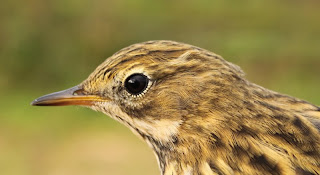I looked at some of the recent migration counts of Chaffinch and Brambling from Falsterbo Bird Observatory, Sweden, where to simplify the vast counts of two species that often travel together, the totals are lumped together -19th September 20,000 Chaffinch/Brambling, 20th September 24,000, 21st September 25,000, a count of 52,000 on 22nd September, and a huge 85,000 today. In recent days local observers and vis mig enthusiasts closer to home in both the Pennines and the Lancaster area have also picked up on the fact that Chaffinches are moving both on an earlier date but also in large numbers for the time of year, something first noted on Another Bird Blog on September 8th.
With for instance over 11 million pairs of Chaffinch in Sweden, and up to 20 million pairs in Finland we can be pretty sure that some of the Chaffinch we have caught in recent weeks are part of the huge movement of Chaffinches through Falsterbo. But it is only in the deeper months of the year, particularly during cold weather on the continent, that we tend to catch the longer winged birds of central and Eastern Europe that are more certainly separable from the current normal sized birds. In fact this autumn we have yet to catch a Chaffinch with a wing length bigger than 90mm and it is a little early for us to catch a Brambling, a species which gradually replaces Chaffinch in the northern parts of their combined range.

Will and I hoped to explore this phenomenon a little more today so we arrived at Rawcliffe Moss in time to alter our net configuration with the intention of catching even more migrating Chaffinch. It’s important to say that our ringing site isn’t a baited feeding site, just a 7 or 8 year old plantation set alongside a track across the moss. We took a chance on the marginal weather forecast, and it wasn’t the best morning for diurnal migration with too much heavy cloud, spits of rain and a threat of heavy showers, but we set to with 4 x 18metre nets. Unfortunately we were rained off at 0930 by a heavy shower and black clouds but not before we managed to catch 29 new birds and once again, no retraps.
Our total, 18 Chaffinch, 6 males and 12 females, 4 Meadow Pipit, 3 Reed Bunting, 1 Blue Tit, 1 Wren and 4 Coal Tit. That is our first significant catch of Coal Tits this autumn and it will be interesting to see the numbers we catch in the next month or two of this irruptive species.







The birding was fairly slow this morning, again a result of the less than ideal conditions. Two Tawny Owls calling from the nearby woods vied with calling Grey Partridges to be first in our notebooks, while both female and a male Sparrowhawks hunted through the plantation but failed to find our nets.
Visible migration of our target species Chaffinch and Meadow Pipit was difficult to estimate with birds seemingly adapting to the rapidly shifting cloud and rain formations as they arrived and left to all directions, but we counted approximately 150 Chaffinch and 80 Meadow Pipits. Other “vis mig” came in the form of 275 Swallow, 25 House Martin, 3 Grey Wagtail, 4 alba wagtail, 4 Siskin, 1 Redpoll, 20 Snipe, 60 Golden Plover and 40 Skylark, but 60 Goldfinch, 15 Linnet and 3 Jays were local birds of the immediate area.




































.jpg)


















.jpg)












